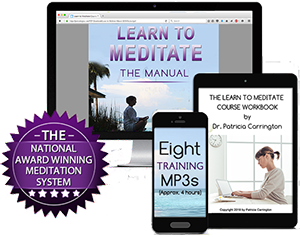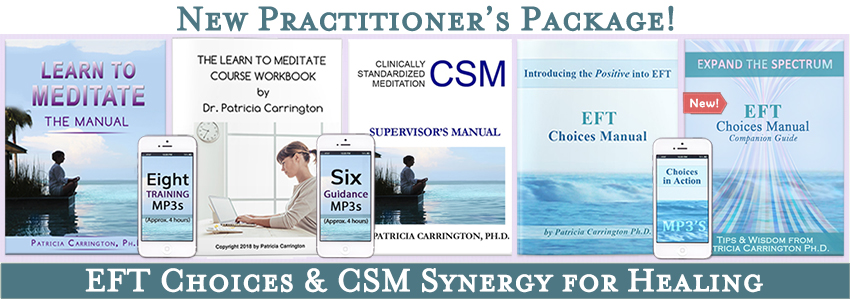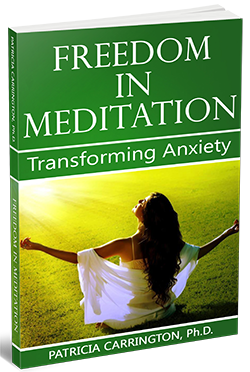 While I certainly didn’t learn meditation in rehab, I did use it when I spent several weeks, twice, in a rehabilitation facility to receive strengthening physical therapy. (See my article, Lessons from Rehab: Finding Gratitude). I had been a regular Meditator since the early 1970s, when I first learned Transcendental Meditation (TM), and was blown away by the effects of this simple way of quieting the inner, constantly chattering self.
While I certainly didn’t learn meditation in rehab, I did use it when I spent several weeks, twice, in a rehabilitation facility to receive strengthening physical therapy. (See my article, Lessons from Rehab: Finding Gratitude). I had been a regular Meditator since the early 1970s, when I first learned Transcendental Meditation (TM), and was blown away by the effects of this simple way of quieting the inner, constantly chattering self.
Soon after learning TM, I developed my own clinically oriented system of meditation, which soon became officially adopted by the New York telephone company in its companywide stress management program and proved to be immensely useful from a medical point of view.
Once having discovered and developed my system, Clinically Standardized Meditation (CSM), the advantages of it and its great ease and safety for the user, personally adopted and practiced this method used for close to 50 years. During that time, I wrote a book about using meditation along with psychotherapy, which was widely accepted by specialists in the field of stress management, and it continues to be read with respect and great interest as a major book on meditation. (Freedom in Meditation). I have also directed clients to practice it as a way to augment their therapy.
People that I have known for many years, both professionally and personally, have gone so far as to attribute my health and vitality at age 94 to my long-term meditation practice. While I have no way of knowing how accurate their assessment is, what is clear is that it certainly hasn’t hurt me to be doing such a beneficial practice, daily, for so many years and adjusting it to my special needs when that was required.
Honestly, I have to say that my meditation practice was not without interruption during all those years. There were times when I clearly felt the need to take a vacation from it temporarily (I discuss doing this in my Learn to Meditate Course). However, the reduction in stress when returning to mediation after a hiatus, garnered advantages for me so great that I continually return to the practice.
My CSM system was developed for reasons I explain in my book and is very similar to TM, but without many of the unnecessary restrictions and occasional misinformation incorporated into the TM movement and is far less costly. It currently sells for less than 10% of the cost of training in TM.
Clinically Standardized Meditation, with its immense simplicity and easy non-forcing nature, is much simpler for most people to learn than Mindfulness Meditation too, by the way. It is a very respectable method, and if it you have tried it, it works for you, and you can handle the considerable discipline it requires, it can be an excellent resource for your mental health and should fit well into any rehab program. However, it is not the easiest process for many people to grasp and endure.
Personally, I prefer practicing CSM, which has a sterling track record among researchers worldwide and has been the subject of many a doctoral dissertation as well as comprehensive company-wide programs in many parts of the world.
It was obvious to me that a challenge, such as living for many weeks in a rehabilitation facility, called for an opportunity to waft away to a “tropical isle” of my own making, once or twice daily, that would initiate a state of gentle, easy, non-forcing rest. Indeed, I found meditation extremely useful for this purpose. I have always loved the immense relief it brings from the stresses of everyday life, and how it puts on hold insistent worries that would otherwise intrude on one’s life.
During my stay in rehab, I shared it with others. When I discovered another patient, Mary Beth, was having difficulties every evening when the nursing staff brought her prescribed medication. She consistently resisted taking it. It was then that I decided to introduce her to meditation to help her with this problem.
She agreed to learn CSM when I suggested that she try it and to her surprise, but not mine, she immediately took to the practice and found it to be extremely quieting and comforting. When she was accustomed to daily meditation, I strongly advised her not to allow herself to meditate during the daytime but keep that experience for a time in the evening shortly before the staff was apt to turn up for their nightly struggle with her about her medications. She didn’t understand why that was a good idea, but because she had benefited from my other suggestions and so enjoyed the meditation, she agreed to try out this schedule.
What happened then surprised her. She began to look forward to that early evening time because she knew the meditation would comfort her. She told me that indeed it felt like being wafted away to a tropical island, where she had no cares and no worries.
Eventually, Mary Beth noticed that when the staff did show up with her medicines, it was a lot easier for her to agree to take them. Nothing seemed as crucial and unpleasant as it had been before. Regular meditation worked to help her solve this problem.
The calming effects that Mary Beth experienced from meditating weren’t surprising. Research has shown CSM to be remarkable in the way it counteracts anxiety, tension, and physical symptoms of stress as well as a host of other problems in life. In fact, its benefits are so vast I will not try to list them here. If you would like to learn more about this method, please read some of my articles on meditation and listen to some audio clips from my Learn to Meditate Course.
Certainly, regular meditation has worked for me, for Mary Beth, and many others. I wouldn’t be surprised if it could work similarly for you. Are you ready to discover the practice of CSM?
Related Product
 Learn to Meditate Course
Learn to Meditate Course
Recipient of the National Health Association Award for the Best Corporate Stress Management Program of the Year, the Learn to Meditate Course represents the simplest, safest, and most authoritative, affordable form of in-home-meditation instruction presently available.






